Voyager: 15 incredible images of our solar system captured by the twin probes (gallery)
The twin probes have captured some remarkable images of our cosmic neighborhood.

NASA's twin probes Voyager 1 and Voyager 2 have captured some truly remarkable images of our solar system and are currently roaming through interstellar space.
Despite its name Voyager 2 launched before Voyager 1 , when it lifted off from Cape Canaveral Space Launch Complex 41 aboard a Titan IIIE-Centaur on Aug. 20, 1977. Voyager 1 followed suit about two weeks later on Sept. 5.
While Voyager 1 primarily focused on Jupiter and Saturn , Voyager 2 visited both gas giants and then ventured on to Uranus and Neptune . But the duo didn't stop there. Voyager 1 officially entered interstellar space on Aug. 25, 2012, while Voyager 2 entered on Nov. 5, 2018. The pair continue to journey through the cosmos and have enough power and fuel to keep scientific instruments running until at least 2025, according to NASA .
Here we celebrate the achievements of both Voyager 1 and Voyager 2 with some incredible images captured by the pair.
This image was taken when NASA's Voyager 1 spacecraft zoomed toward Jupiter in January and February 1979, capturing hundreds of images during its approach, including this close-up of swirling clouds around Jupiter's Great Red Spot .
This image of the Earth and moon are in a single frame. Voyager was the first spacecraft to achieve this and captured the iconic image on Sept. 18, 1977, by Voyager 1 when it was 7.25 million miles from Earth. The moon is at the top of the picture and beyond the Earth as viewed by Voyager.
Color composite by Voyager 2 showing Jupiter's faint ring system. Images captured in July 1979.
A Voyager 1 image of Jupiter's moon Io showing the active plume of the volcano Loki. The heart-shaped feature southeast of Loki consists of fallout deposits from the active plume Pele. The images that make up this mosaic were taken from an average distance of approximately 340,000 miles (490,000 kilometers) from the moon.
Layers of haze covering Saturn's moon Titan are seen in this image taken by Voyager 1 on Nov. 12, 1980, at a range of 13,700 miles (22,000 km). This false-color image shows the details of the haze that covers Titan. The upper level of the thick aerosol above the moon's limb appears orange.
This view of Uranus was recorded by Voyager 2 on Jan. 25, 1986, as the spacecraft left the planet behind and set forth on the cruise to Neptune. Even at this extreme angle, Uranus retains the pale blue-green color seen by ground-based astronomers and recorded by Voyager during the historic encounter.
This Voyager 2 high-resolution color image provides obvious evidence of vertical relief in Neptune's bright cloud streaks. These clouds were observed at a latitude of 29 degrees north near Neptune's east terminator, the "line" on a planet where daylight meets darkness.
Global color mosaic of Triton , taken in 1989 by Voyager 2 during its flyby of the Neptune system. The color was synthesized by combining high-resolution images taken through orange, violet and ultraviolet filters; these images were displayed as red, green and blue images and combined to create this color version.
Saturn and three of its moons, Tethys, Dione and Rhea, seen by a Voyager spacecraft on Aug. 4, 1982, from a distance of 13 million miles (21 million km).
This narrow-angle color image of the Earth, dubbed the "Pale Blue Dot," is a part of the first ever 'portrait' of the solar system taken by Voyager 1. The spacecraft acquired a total of 60 frames for a mosaic of the solar system from a distance of more than 4 billion miles (6 billion km) from Earth and about 32 degrees above the ecliptic, which is the plane that contains most of the planets of the solar system.
Voyager 1 took photos of Jupiter and two of its satellites (Io, left, and Europa ).
Enhanced color view of Saturn's ring system captured by Voyager 2 on Aug. 17, 1981, at a distance of 5.5 million miles (8.9 million km). The color variations between the rings possibly indicate variations in chemical composition from one part of Saturn's ring system to another.
Close-up of the surface of Jupiter's moon Europa captured by Voyager 2 at a distance of 152,000 miles (246,000 km).
Voyager 2 captured this image of Neptune's rings on Aug. 26, 1989, from a distance of 175,000 miles (280,000 km).
A false-color image of Callisto captured on July 7, 1979, by Voyager 2 at a distance of about 677,000 miles (1.09 million km). Callisto is the second largest moon of Jupiter and is the most heavily cratered of the Galilean satellites.
Daisy Dobrijevic joined Space.com in February 2022 having previously worked for our sister publication All About Space magazine as a staff writer. Before joining us, Daisy completed an editorial internship with the BBC Sky at Night Magazine and worked at the National Space Centre in Leicester, U.K., where she enjoyed communicating space science to the public. In 2021, Daisy completed a PhD in plant physiology and also holds a Master's in Environmental Science, she is currently based in Nottingham, U.K. Daisy is passionate about all things space, with a penchant for solar activity and space weather. She has a strong interest in astrotourism and loves nothing more than a good northern lights chase!
- Mike Wall Senior Space Writer
'There was some tension in the room', NASA says of decision to bring Boeing's Starliner spacecraft home without astronauts
UAE on track to launch bold 7-asteroid mission in 2028
Blue Origin droneship arrives in Florida ahead of 1st New Glenn launch (video, photos)

Most Popular
- 2 SpaceX rocket to launch new Starlink satellite fleet today (Sept. 4)
- 3 Tiny asteroid will hit Earth today, burn up over Philippines. 'Discovered this morning,' ESA says
- 4 Belief in alien visits to Earth is spiraling out of control – here's why that's so dangerous
- 5 New 'StarRupture' gameplay trailer is a killer bug hunt on a crazy planet (video)
See the 10 Best Photos Taken by Voyager 2

More Must-Reads from TIME
- The 100 Most Influential People in AI 2024
- Inside the Rise of Bitcoin-Powered Pools and Bathhouses
- How Nayib Bukele’s ‘Iron Fist’ Has Transformed El Salvador
- What Makes a Friendship Last Forever?
- Long COVID Looks Different in Kids
- Your Questions About Early Voting , Answered
- Column: Your Cynicism Isn’t Helping Anybody
- The 32 Most Anticipated Books of Fall 2024
Contact us at [email protected]

Suggested Searches
- Climate Change
- Expedition 64
- Mars perseverance
- SpaceX Crew-2
- International Space Station
- View All Topics A-Z
Humans in Space
Earth & climate, the solar system, the universe, aeronautics, learning resources, news & events.
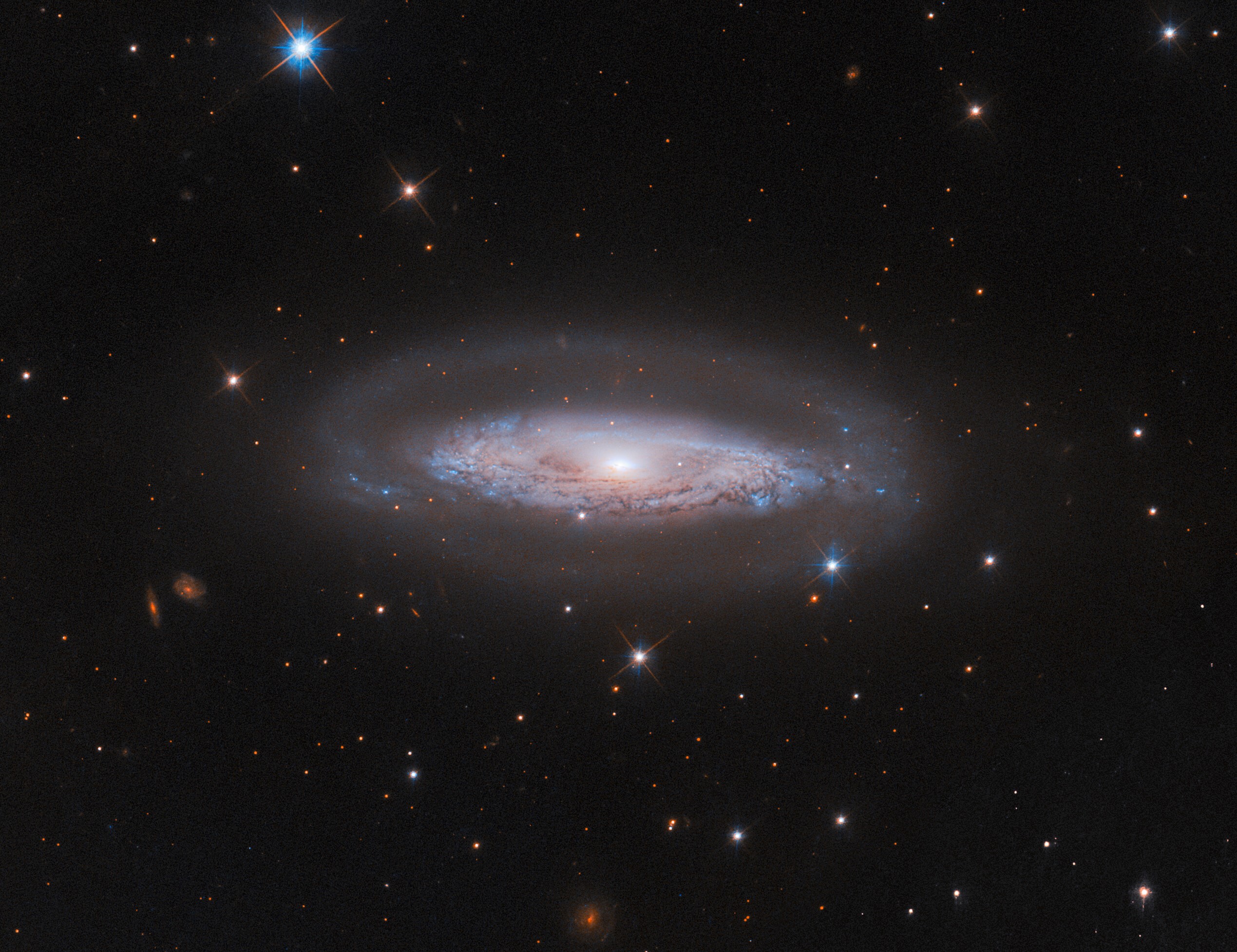
Hubble Examines a Busy Galactic Center
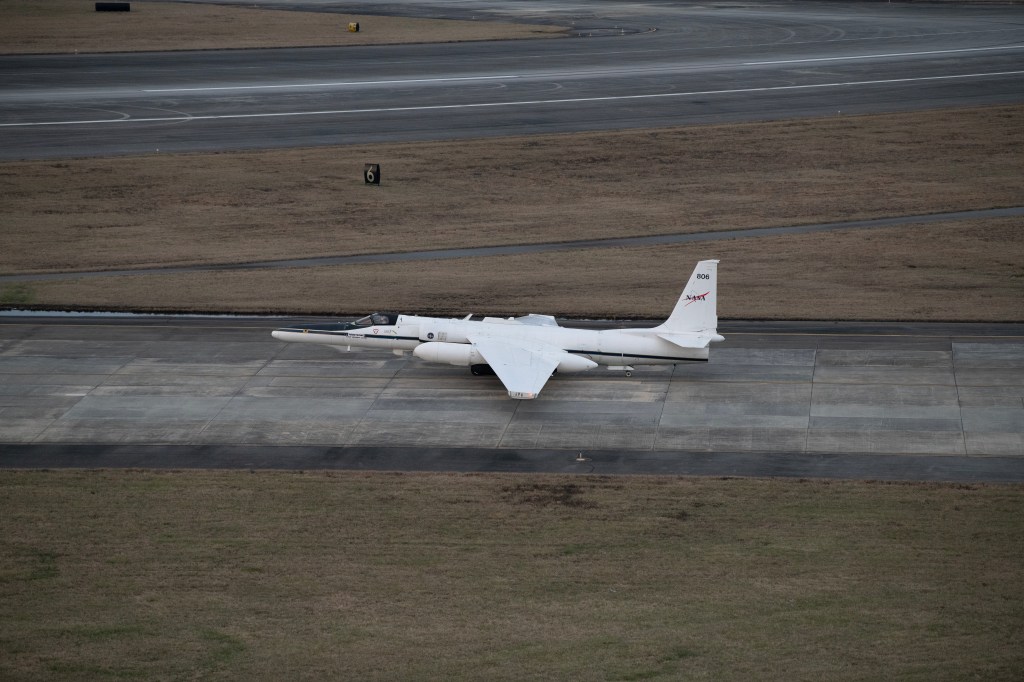
NASA Earth Scientists Take Flight, Set Sail to Verify PACE Satellite Data

What’s Up: September 2024 Skywatching Tips from NASA
- Search All NASA Missions
- A to Z List of Missions
- Upcoming Launches and Landings
- Spaceships and Rockets
- Communicating with Missions
- James Webb Space Telescope
- Hubble Space Telescope
- Why Go to Space
- Commercial Space
- Destinations
- Living in Space
- Explore Earth Science
- Earth, Our Planet
- Earth Science in Action
- Earth Multimedia
- Earth Science Researchers
- Pluto & Dwarf Planets
- Asteroids, Comets & Meteors
- The Kuiper Belt
- The Oort Cloud
- Skywatching
- The Search for Life in the Universe
- Black Holes
- The Big Bang
- Dark Energy & Dark Matter
- Earth Science
- Planetary Science
- Astrophysics & Space Science
- The Sun & Heliophysics
- Biological & Physical Sciences
- Lunar Science
- Citizen Science
- Astromaterials
- Aeronautics Research
- Human Space Travel Research
- Science in the Air
- NASA Aircraft
- Flight Innovation
- Supersonic Flight
- Air Traffic Solutions
- Green Aviation Tech
- Drones & You
- Technology Transfer & Spinoffs
- Space Travel Technology
- Technology Living in Space
- Manufacturing and Materials
- Science Instruments
- For Kids and Students
- For Educators
- For Colleges and Universities
- For Professionals
- Science for Everyone
- Requests for Exhibits, Artifacts, or Speakers
- STEM Engagement at NASA
- NASA's Impacts
- Centers and Facilities
- Directorates
- Organizations
- People of NASA
- Internships
- Our History
- Doing Business with NASA
- Get Involved
NASA en Español
- Aeronáutica
- Ciencias Terrestres
- Sistema Solar
- All NASA News
- Video Series on NASA+
- Newsletters
- Social Media
- Media Resources
- Upcoming Launches & Landings
- Virtual Guest Program
- Image of the Day
- Sounds and Ringtones
- Interactives
- STEM Multimedia

NASA Invites Social Creators to Experience Launch of Europa Clipper Mission
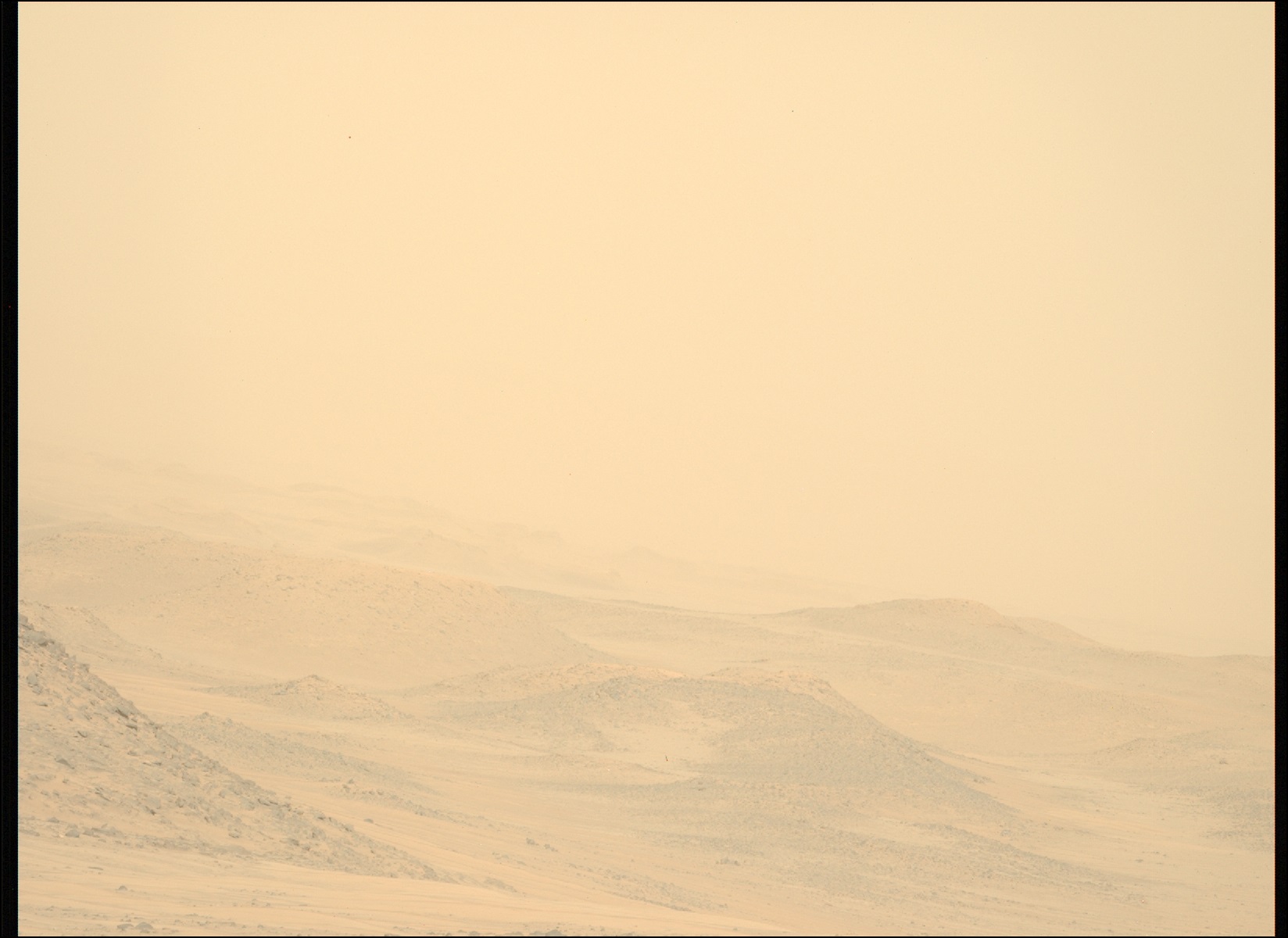
Persevering Through the Storm
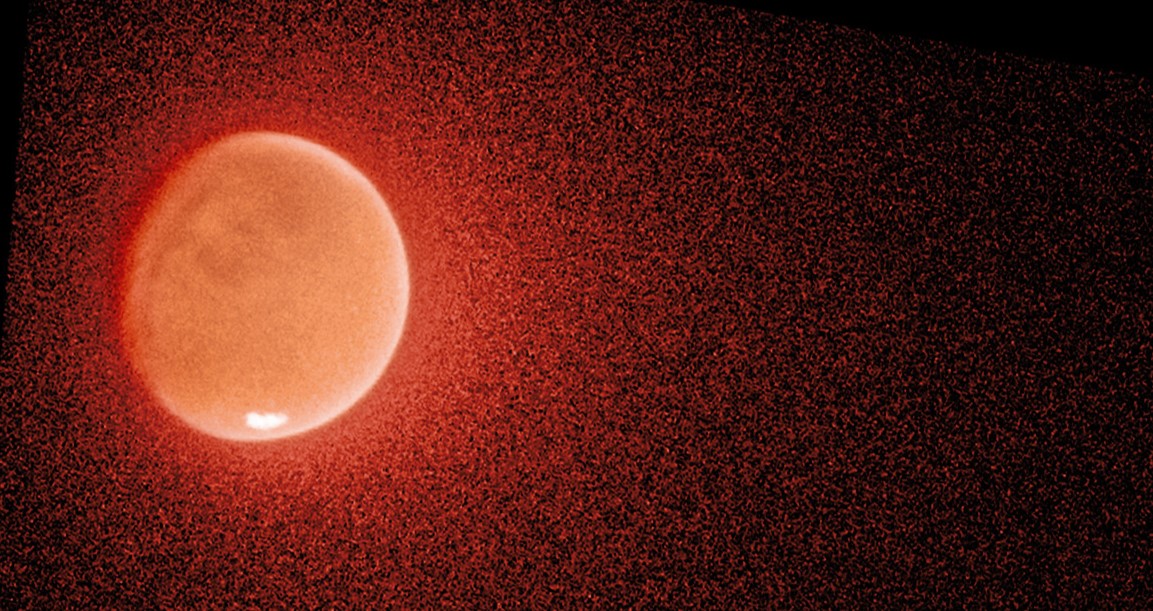
NASA’s Hubble, MAVEN Help Solve the Mystery of Mars’ Escaping Water

NASA Astronaut Don Pettit’s Science of Opportunity on Space Station

NASA, Boeing Optimizing Vehicle Assembly Building High Bay for Future SLS Stage Production

NASA Seeks Input for Astrobee Free-flying Space Robots
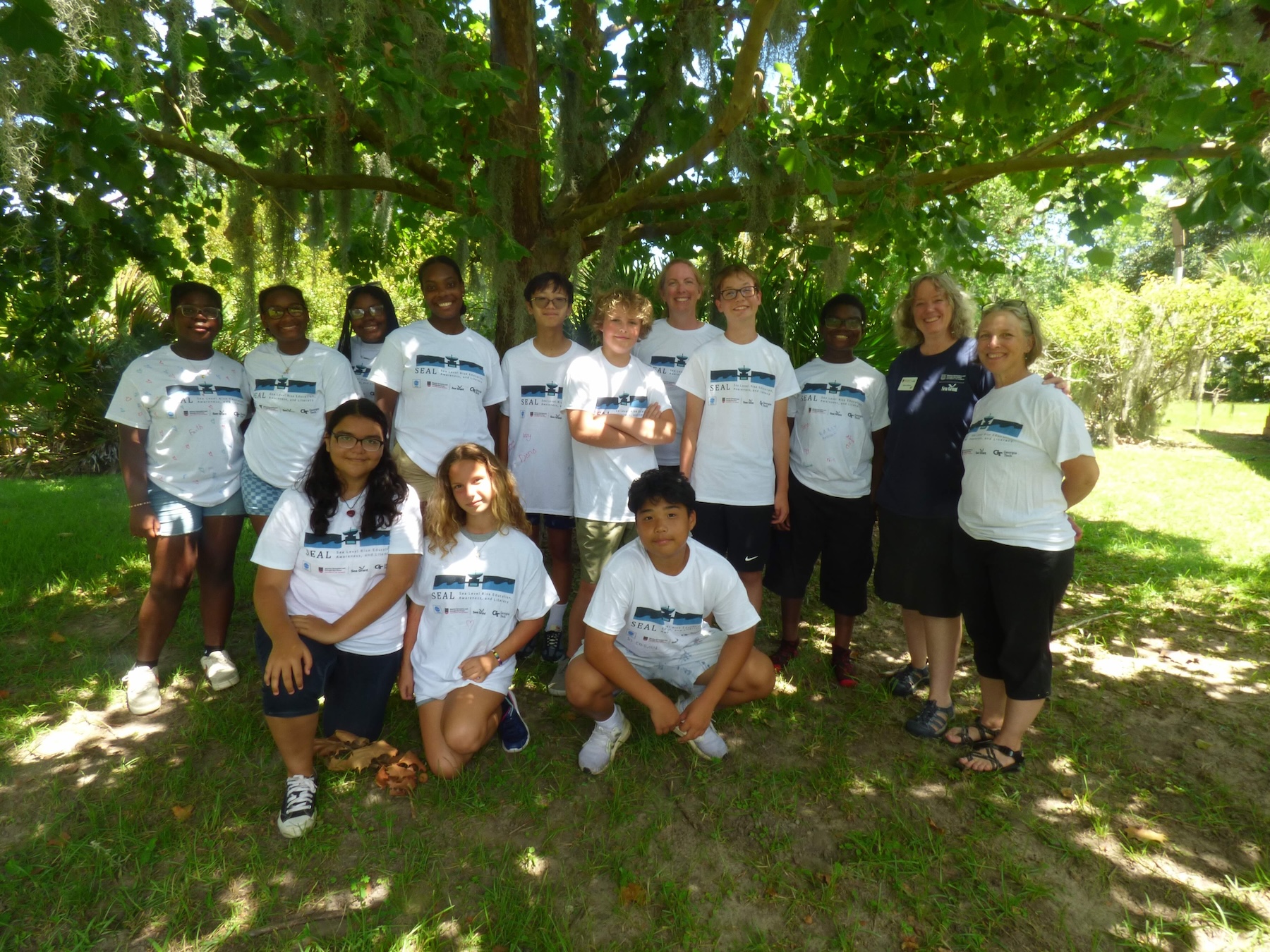
NASA Summer Camp Inspires Future Climate Leaders

NASA Mission Gets Its First Snapshot of Polar Heat Emissions
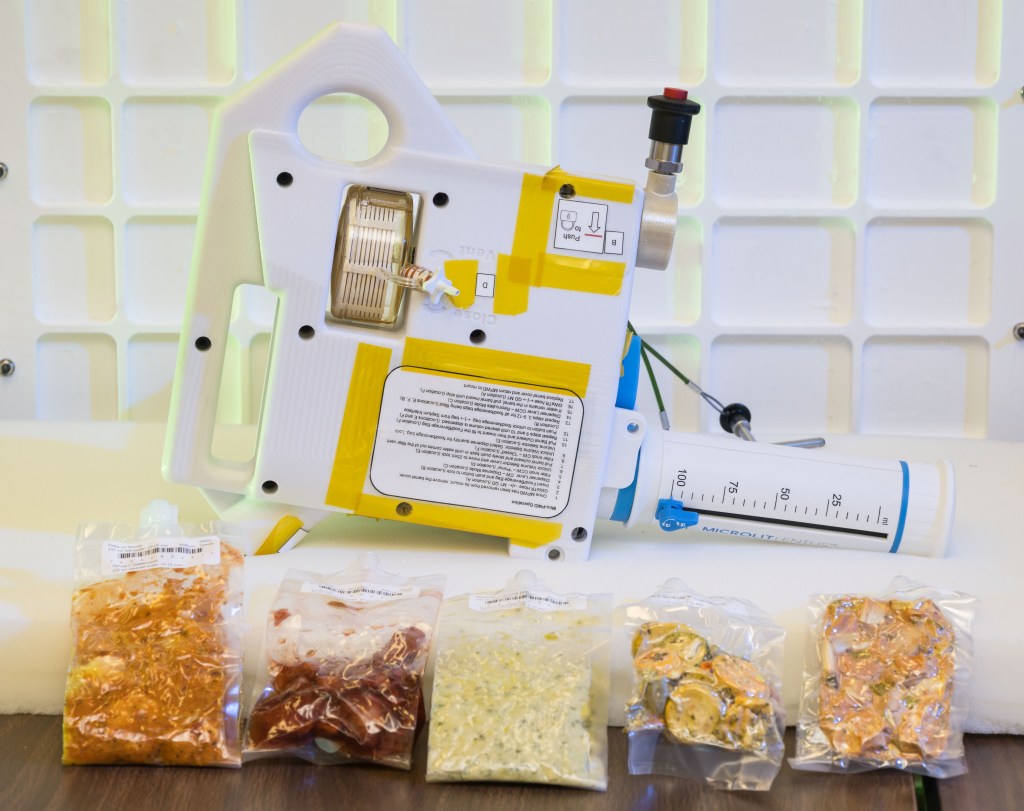
Artemis IV: Gateway Gadget Fuels Deep Space Dining
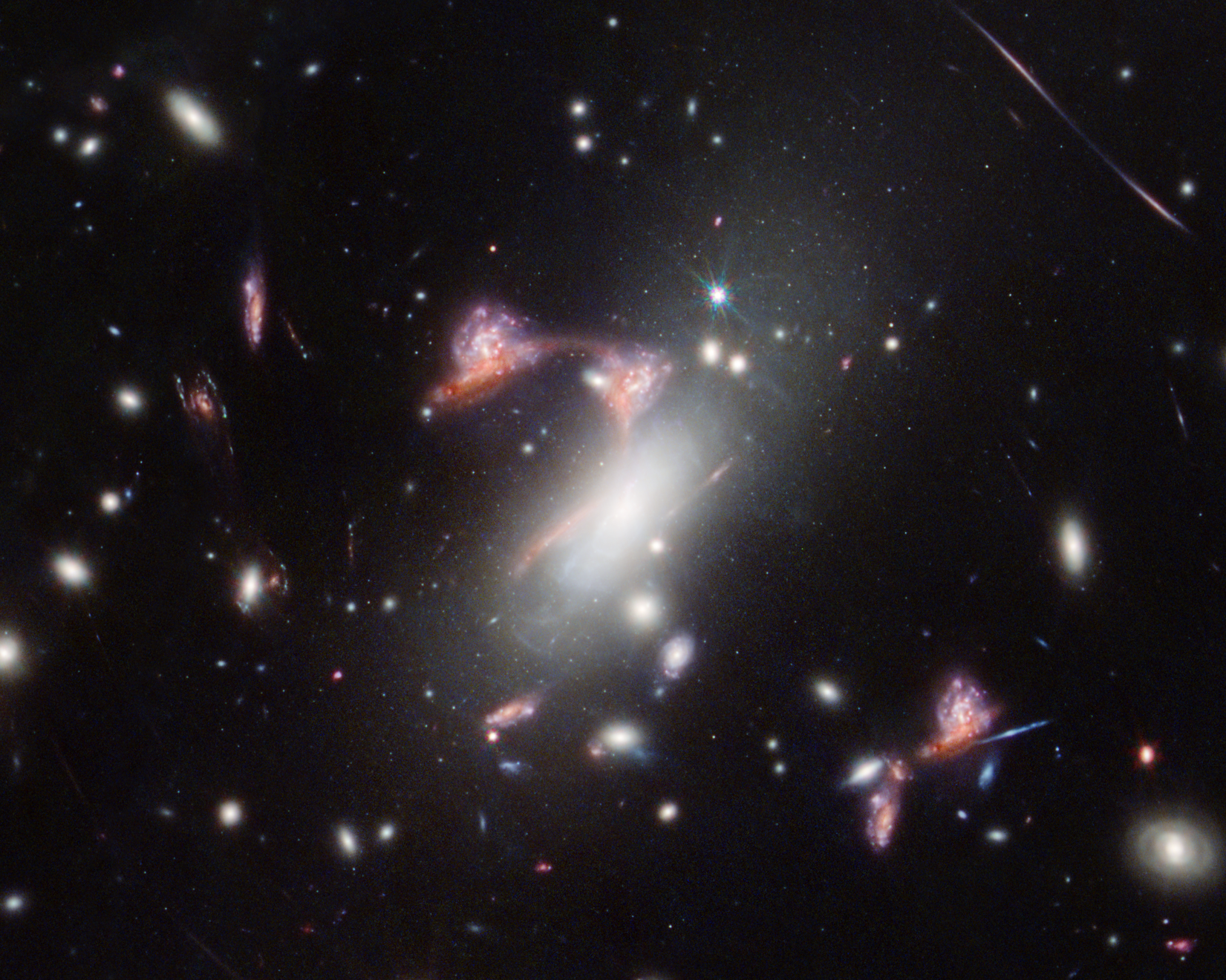
NASA’s Webb Reveals Distorted Galaxy Forming Cosmic Question Mark

NASA’s Mini BurstCube Mission Detects Mega Blast
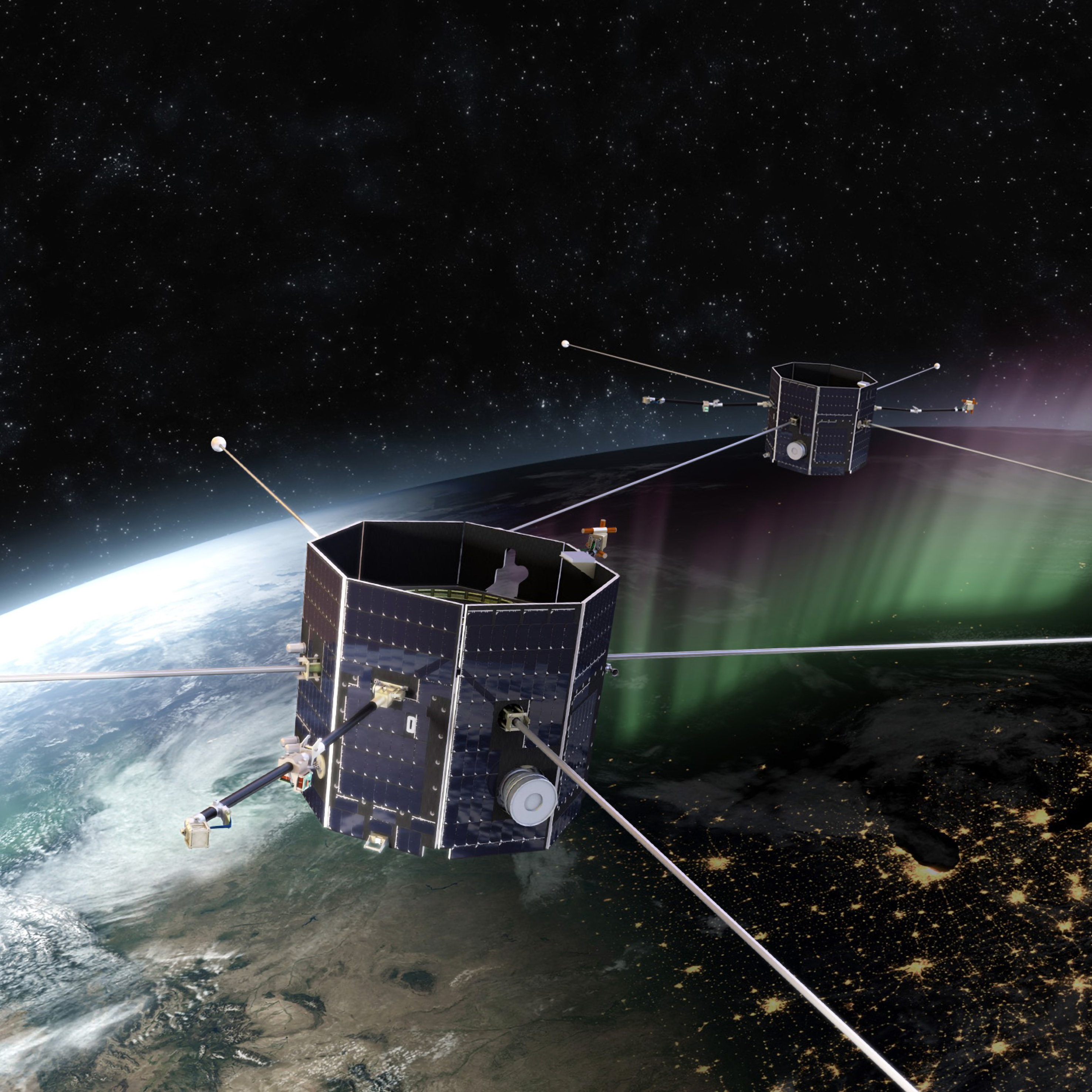
NASA Tunnel Generates Decades of Icy Aircraft Safety Data

Research Plane Dons New Colors for NASA Hybrid Electric Flight Tests

NASA G-IV Plane Will Carry Next-Generation Science Instrument
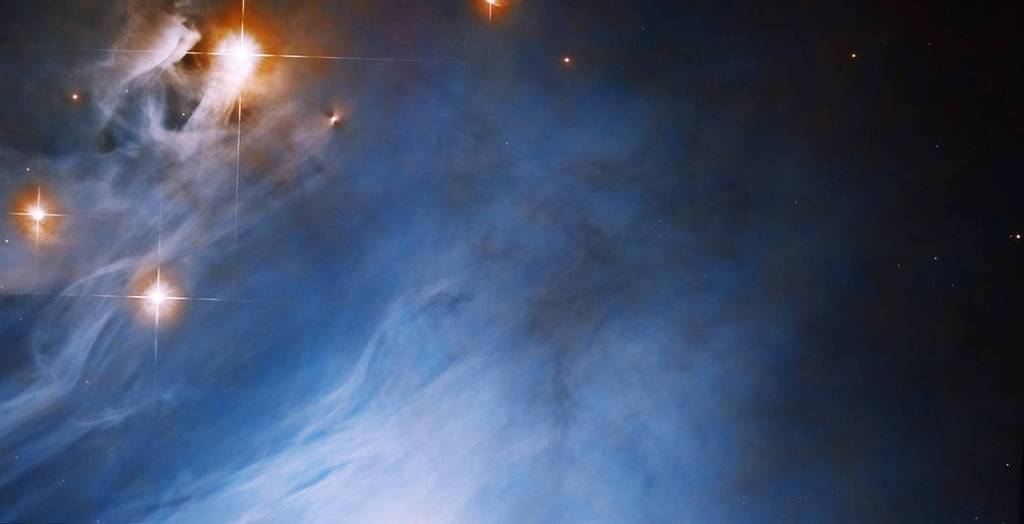

OSAM-1 Partnership Opportunity: Request for Information
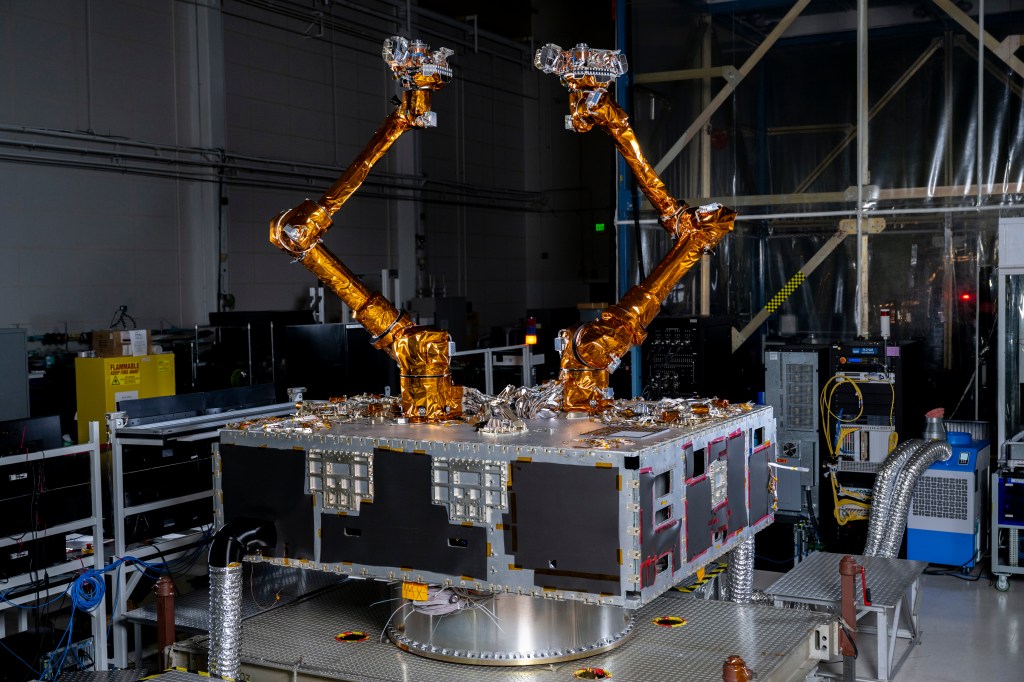
NASA to Support DARPA Robotic Satellite Servicing Program

NASA JPL Developing Underwater Robots to Venture Deep Below Polar Ice
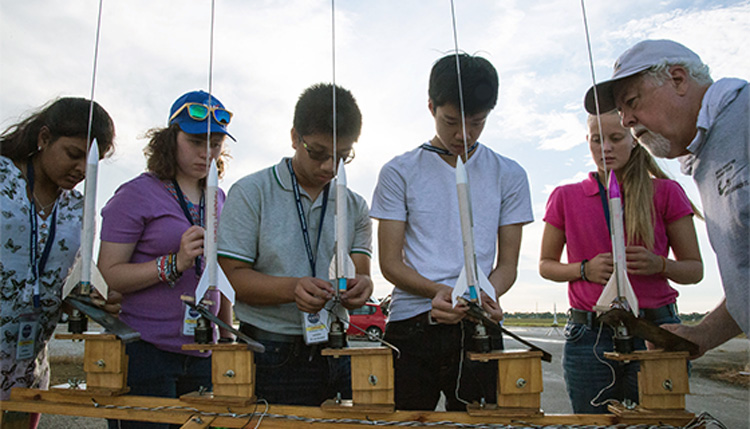
Learn Math with NASA Science

Eclipses Create Atmospheric Gravity Waves, NASA Student Teams Confirm

La NASA invita a los medios al lanzamiento de Europa Clipper

El X-59 de la NASA avanza en las pruebas de preparación para volar

La NASA invita a creadores de las redes sociales al lanzamiento de la misión Europa Clipper
Voyager 2 image of uranus.

This is an image of the planet Uranus taken by the spacecraft Voyager 2. NASA’s Voyager 2 spacecraft flew closely past distant Uranus, the seventh planet from the Sun, in January 1986.
Image Credit: NASA/JPL
- Become A Member
- Gift Membership
- Kids Membership
- Other Ways to Give
- Explore Worlds
- Defend Earth
How We Work
- Education & Public Outreach
- Space Policy & Advocacy
- Science & Technology
- Global Collaboration
Our Results
Learn how our members and community are changing the worlds.
Our citizen-funded spacecraft successfully demonstrated solar sailing for CubeSats.
Space Topics
- Planets & Other Worlds
- Space Missions
- Space Policy
- Planetary Radio
- Space Images
The Planetary Report
The exoplanet issue.
The expanding frontier of discovery.
Get Involved
Membership programs for explorers of all ages.
Get updates and weekly tools to learn, share, and advocate for space exploration.
Volunteer as a space advocate.
Support Our Mission
- Renew Membership
- Society Projects
The Planetary Fund
Accelerate progress in our three core enterprises — Explore Worlds, Find Life, and Defend Earth. You can support the entire fund, or designate a core enterprise of your choice.
- Strategic Framework
- News & Press
The Planetary Society
Know the cosmos and our place within it.
Our Mission
Empowering the world's citizens to advance space science and exploration.
- Explore Space
- Take Action
- Member Community
- Account Center
- “Exploration is in our nature.” - Carl Sagan
Rae Paoletta • Mar 03, 2022
The best space pictures from the Voyager 1 and 2 missions
Launched in 1977, NASA’s Voyager 1 and 2 missions provided an unprecedented glimpse into the outer solar system — a liminal space once left largely to the imagination. The spacecraft provided views of worlds we’d never seen before, and in some cases, haven’t seen much of since.
The Voyager probes were launched about two weeks apart and had different trajectories, like two tour guides at the same museum. Only Voyager 2 visited the ice giants — Uranus and Neptune — for example.
The Voyagers hold a unique position in the pantheon of space history because they’re still making it; even right now, Voyagers 1 and 2 are the only functioning spacecraft in interstellar space. Both hold a Golden Record that contains sights and sounds of Earth in case alien life were to find one of the spacecraft.
As the Voyager missions voyage on, it’s good to look back at how they captured our solar system before leaving it.
This content is hosted by a third party (youtube.com), which uses marketing cookies. Please accept marketing cookies to watch this video.
The Time is Now.
As a Planetary Defender, you’re part of our mission to decrease the risk of Earth being hit by an asteroid or comet.
For full functionality of this site it is necessary to enable JavaScript. Here are instructions on how to enable JavaScript in your web browser .
Saturn Taken from Voyager 2

This true color picture was assembled from Voyager 2 Saturn images obtained Aug. 4 from a distance of 21 million kilometers (13 million miles) on the spacecraft's approach trajectory. Three of Saturn's icy moons are evident at left. They are, in order of distance from the planet: Tethys, 1,050 km. (652 mi.) in diameter; Dione, 1,120 km. (696 mi.); and Rhea, 1,530 km. (951 mi.). The shadow of Tethys appears on Saturn's southern hemisphere. A fourth satellite, Mimas, is less evident, appearing as a bright spot a quarter-inch in from the planet's limb about half an inch above Tethys; the shadow of Mimas appears on the planet about three-quarters of an inch directly above that of Tethys. The pastel and yellow hues on the planet reveal many contrasting bright and darker bands in both hemispheres of Saturn's weather system. The Voyager project is managed for NASA by the Jet Propulsion Laboratory, Pasadena, Calif.
Keep Exploring
- VG Imaging Science Subsystem - Narrow Angle

Voyager at Saturn
The Voyager 1 and 2 Saturn encounters occurred nine months apart, in November 1980 and August 1981. Voyager 2 completed its encounter with Uranus in January 1986 and with Neptune in August 1989. Both are now leaving the solar system.
Popular Tags
- James Webb Space Telescope
- Earth Observatory Image of the Day
- James Webb Space Telescope - Science images
- Hubble Space Telescope
- James Webb Space Telescope – Engineering images
- Earth Observer
- 2023 Technology Showcase for Planetary Science
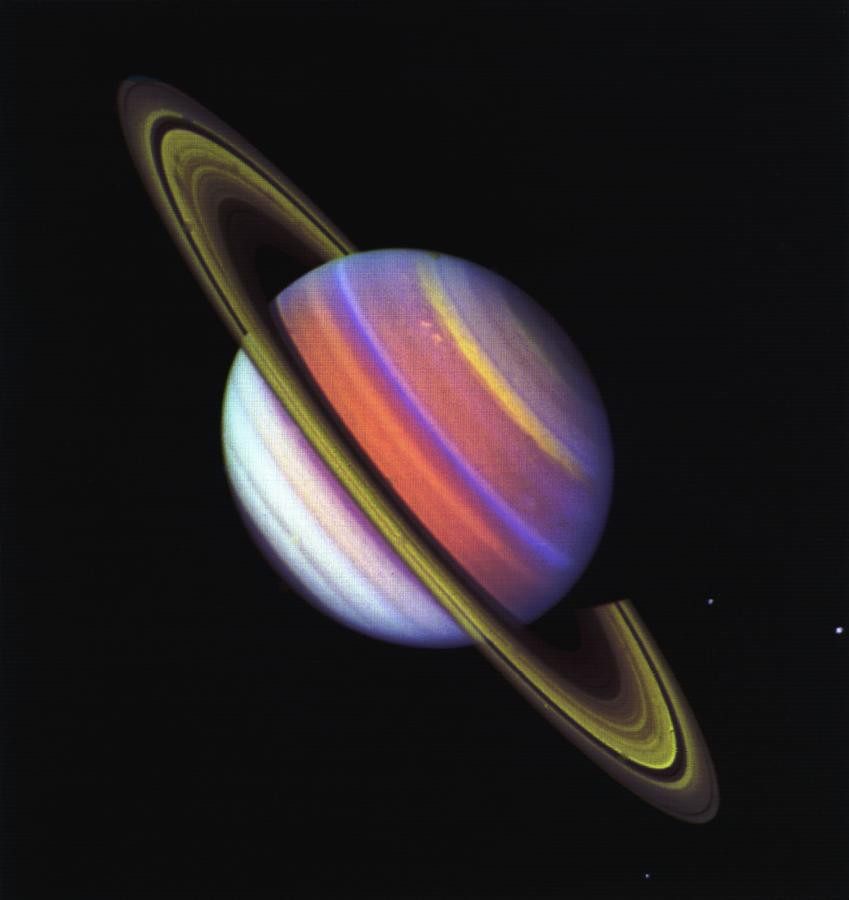

IMAGES
VIDEO
COMMENTS
Voyager 2: Hello Interstellar Space, Goodbye Heliosphere Full Resolution: TIFF (8.947 MB) JPEG (633.8 kB) 2018-12-10: Voyager Interstellar Mission: 1920x1080x3 ... Ganymede - Close Up Photos Full Resolution: TIFF (1.036 MB) JPEG (232.3 kB) 2000-05-23: Tethys: Voyager: VG ISS - Narrow Angle: 800x800x1: PIA02276: Tethys Full Resolution: ...
Images Voyager Took. The Voyager 1 and 2 spacecraft explored Jupiter, Saturn, Uranus and Neptune before starting their journey toward interstellar space. Here you'll find some of those iconic images, including "The Pale Blue Dot" - famously described by Carl Sagan - and what are still the only up-close images of Uranus and Neptune.
Voyager 2 also returned spectacular photos of Miranda, Oberon, Ariel, Umbriel, and Titania, five of Uranus' larger moons. In flying by Miranda at a range of only 17,560 miles (28,260 kilometers), the spacecraft came closest to any object so far in its nearly decade-long travels. Images of the moon showed a strange object whose surface was a ...
Voyager 2 is a space probe launched by NASA on August 20, 1977, as a part of the Voyager program. ... Jupiter's moon Europa displayed a large number of intersecting linear features in the low-resolution photos from Voyager 1. At first, scientists believed the features might be deep cracks, caused by crustal rifting or tectonic processes. ...
Neptune. NASA explores the unknown in air and space, innovates for the benefit of humanity, and inspires the world through discovery. Watch videos and view images of Voyager 1 and 2 as they passed by Saturn, Jupiter, Uranus and Neptune and get a glimpse into the images relating to the Golden Record.
Voyager 2: Hello Interstellar Space, Goodbye Heliosphere Full Resolution: TIFF (8.947 MB) JPEG (633.8 kB) 2018-12-10: Voyager Interstellar Mission: 1920x1080x3: PIA22915: Voyager 2 Spacecraft Instruments Full Resolution ...
This picture of Neptune was produced from the last whole planet images taken through the green and orange filters on the Voyager 2 narrow angle camera. The images were taken at a range of 4.4 million miles from the planet, 4 days and 20 hours before closest approach. The picture shows the Great Dark Spot and its companion bright smudge; on the ...
A false-color image of Callisto captured on July 7, 1979, by Voyager 2 at a distance of about 677,000 miles (1.09 million km). Callisto is the second largest moon of Jupiter and is the most ...
30 Years Ago: Voyager 2's Historic Neptune Flyby. Anthony Greicius. This picture of Neptune was taken by Voyager 2 less than five days before the probe's closest approach of the planet on Aug. 25, 1989. The picture shows the "Great Dark Spot" — a storm in Neptune's atmosphere — and the bright, light-blue smudge of clouds that ...
This photo of Jupiter was taken by NASA's Voyager 1 on the evening of March 1, 1979, from a distance of 2.7 million miles (4.3 million kilometers). The photo shows Jupiter's Great Red Spot (top) and one of the white ovals. ... This image, taken by NASA's Voyager 2 early in the morning of Aug. 23, 1989, is a false color image of Triton, Neptune ...
This color Voyager 2 image mosaic shows the water-ice-covered surface of Enceladus, one of Saturn's icy moons. Enceladus' diameter of just 500 km would fit across the state of Arizona, yet despite its small size Enceladus exhibits one of the most interesting surfaces of all the icy satellites. Enceladus reflects about 90% of the incident ...
An enhanced color image of Saturn's rings taken from the Voyager 2 spacecraft on Aug. 1981. Space Frontiers/Getty Images. View of volcanic eruptions of Pele on Jupiter's moon Io taken from the ...
NASA explores the unknown in air and space, innovates for the benefit of humanity, and inspires the world through discovery. In the summer of 1989, NASA's Voyager 2 became the first spacecraft to observe the planet Neptune up close, its final planetary target.
This picture of Neptune was produced from the last whole planet images taken through the green and orange filters on the Voyager 2 narrow angle camera. The images were taken on Aug. 20, 1989, at a range of 4.4 million miles from the planet, 4 days and 20 hours before closest approach on Aug. 25. The picture shows the Great Dark Spot and its ...
This Voyager 2 image of Neptune shows a cold and dark wind-whipped world. In 1989, NASA's Voyager 2 became the first and only spacecraft to observe the planet Neptune, passing about 3,000 miles above the planet's north pole.
Voyager at Uranus. At its closet, the spacecraft came within 81,800 kilometers (50,600 miles) of Uranus's cloudtops on Jan. 24, 1986. Voyager 2 radioed thousands of images and voluminous amounts of other scientific data on the planet, its moons, rings, atmosphere, interior and the magnetic environment surrounding Uranus.
Europa During Voyager 2 Closest Approach. Sept. 26, 1996. This color image of the Jovian moon Europa was acquired by Voyager 2 during its close encounter on Monday morning, July 9, 1979. Europa, the size of our moon, is thought to have a crust of ice perhaps 100 kilometers thick which overlies the silicate crust.
NASA's Voyager 2 spacecraft flew closely past distant Uranus, the seventh planet from the Sun, in January 1986. Image Credit: NASA/JPL. This is an image of the planet Uranus taken by the spacecraft Voyager 2.
Image: NASA / JPL / Ted Stryk. Saturn as seen by Voyager 1 The last picture from Voyager 1's approach to Saturn in which the entire planet and ring system can be seen in a single frame. Image: NASA/JPL/Björn Jónsson. Voyager 2's best view of Enceladus This was the Voyager mission's best view of Enceladus, captured by Voyager 2 on August 26 ...
Voyager at Jupiter. Photography of Jupiter began in January 1979, when images of the brightly banded planet already exceeded the best taken from Earth. Voyager 1 completed its Jupiter encounter in early April, after taking almost 19,000 pictures and many other scientific measurements. Voyager 2 picked up the baton in late April and its ...
(Zillow) For Sale: 3 beds, 2 baths ∙ 1460 sq. ft. ∙ 1615 Voyager Dr, Sarasota, FL 34234 ∙ $235,000 ∙ MLS# 4F26D2E3EDFA View the sold MLS listing to see sale price, photos and other property details from the MLS.
Uranus as seen by NASA's Voyager 2. Dec. 18, 1986. This is an image of the planet Uranus taken by the spacecraft Voyager 2 in 1986. The Voyager project is managed for NASA by the Jet Propulsion Laboratory. Download JPG.
Saturn Taken from Voyager 2. Dec. 5, 1998. This true color picture was assembled from Voyager 2 Saturn images obtained Aug. 4 from a distance of 21 million kilometers (13 million miles) on the spacecraft's approach trajectory. Three of Saturn's icy moons are evident at left.
The Voyager 1 and 2 Saturn encounters occurred nine months apart, in November 1980 and August 1981. Voyager 2 completed its encounter with Uranus in January 1986 and with Neptune in August 1989. Both are now leaving the solar system.